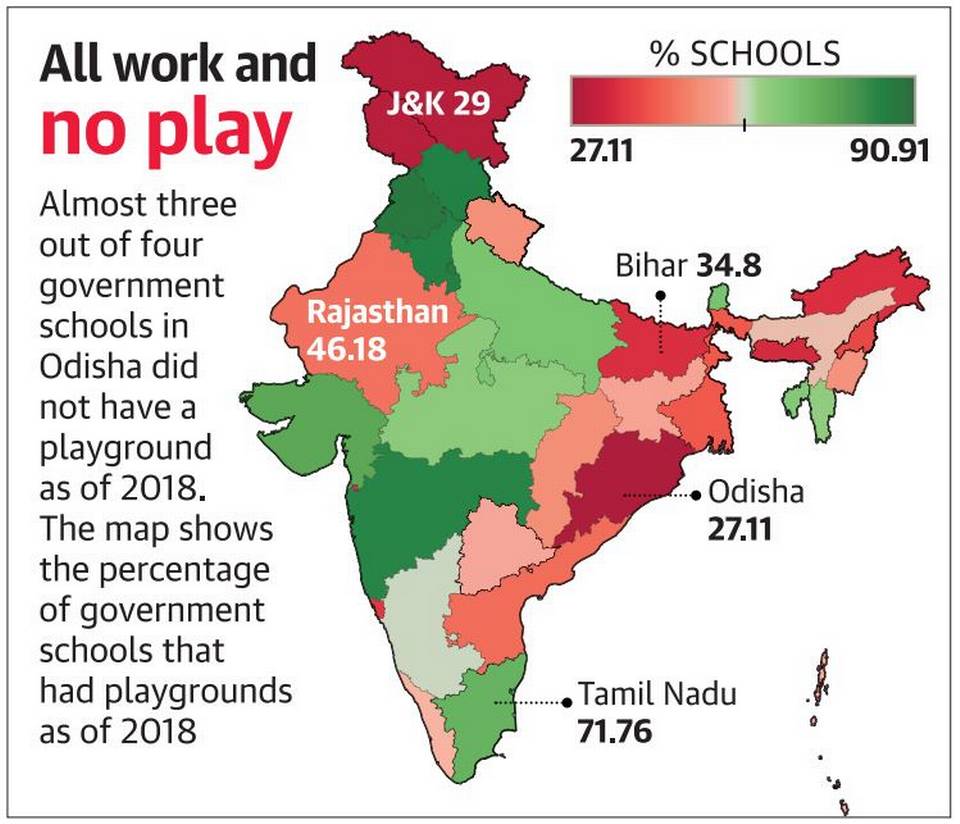Unutilised Budgetary Funds in Education | 09 Mar 2020
Why in News
Recently, the Parliamentary Standing Committee on Human Resource Development (HRD) has presented a report on the 2020-2021 demand for grants for school education in the Rajya Sabha.
- The report identifies shortfalls in budgetary funding and utilisation, resulting in critical infrastructure gaps in the government schools in India.
Key Points
- Reduction in Finance:
- The budgetary allocations experienced a 27% cut from proposals made by the School Education department.
- Similarly, 27% of reductions have been observed in the fund needed for the implementation of Central and Centrally Sponsored Schemes.
- Also, the government has spent only 71% of allotted funds for the core Samagra Shiksha Scheme until December 31, 2019.
- Access to Electricity and Playground:
- Almost half of the government schools in the country do not have any electricity or playgrounds.
- Only 56% of schools have electricity, with the lowest rates in Manipur and Madhya Pradesh, where less than 20% have access to power.
- Less than 57% of schools have playgrounds, including less than 30% of schools in Odisha and Jammu and Kashmir.
- Overall Infrastructure:
- A dismal rate of progress has been observed in building classrooms, labs and libraries to strengthen government higher secondary schools.
- Almost 40% of schools did not have a boundary wall, endangering the safety of students and school property.
- The higher secondary schools experienced greater infrastructural gaps compared to secondary schools and primary schools.
- Also, less than 5% of proposed infrastructure facilities such as ramps and special toilets for differently-abled students have been completed in the government schools.
Recommendations
- Additional funds for implementation of the core schemes such as Samgra Shiksha Abhiyan.
- Collaboration of HRD Ministry with the Mahatma Gandhi National Rural Employment Guarantee Scheme (MGNREGS) to construct boundary walls and other infrastructure facilities.
- Collaboration with the Ministry of New and Renewable Energy to provide solar energy and other renewable energy sources so that schools have access to power.
